Market Segmentation: One Method, Four Examples

Introduction
Companies segment their markets to improve their competitiveness and profitability in fundamental ways:
- By focusing product development, marketing and service resources on segments with the most potential, companies literally can multiply their marketing and service efficiency.
- By developing products, services, and marketing messages that address those segments’ specific needs, they can greatly improve their share of the most desirable business. At the same time, by focusing on the needs of the most desirable customers, companies can improve retention of those customers.
Very often, companies shape their market segmentation using the results of market research and analysis. Market segmentation research is not designed to shape the market. Rather, it reveals underlying divisions in the market and characteristics of the market segments that can be used for effective and profitable marketing.
At the very least, segmentation research places the steps companies take on a firm factual foundation. Often, it also uncovers characteristics of the market that are not obvious and identifies ways of dividing and approaching the market that will be particularly effective. If these ways are not evident to competitors, the marketing impact of segmentation research can be even more beneficial.
At a more tactical level, market segmentation can make the choices a company faces in developing products, services, and marketing messages easier. Often, market segmentation shows that many conceivable combinations of interest in product features, combinations of service needs, or combinations of attitudes are actually very rare in the marketplace. As a result, there is no need for the company to be prepared to deal with these combinations.
Effective Segmentation
What makes a segmentation analysis valuable? Market segmentation research includes more “art” (although no less “science”) than other types of market research. This is the case because analysis often turns up two or more different sets of segments, that is, two or more different ways of dividing the market. For example, one analysis might subdivide a segment; another might not recognize that division.
In these circumstances, what counts is a segmentation scheme that the firm can implement to create real marketing advantages. Which scheme is best depends not just on which provides the best description of the market, but also on the company’s strengths and marketing goals:
- For example, a company that is relatively large in its market might view a segment constituting 10% of the market as too small to serve as the foundation for a marketing strategy, no matter how desirable that segment is. A smaller firm in the same market, however, might see pursuit of the same segment as an exceptionally fruitful strategy.
Thus, the best segmentation analysis is the one that is most useful.
Deciding what Data Inputs to Use
Prior to carrying out a segmentation study, a firm should carefully consider what data inputs to use to ensure that the different segments identified can be targeted for actual marketing. If segments cannot be targeted, the most descriptive segmentation scheme may not be very useful.
Self-Organizing Map
In our segmentation projects, we have used a neural network based method that allows a computer to “learn” the structure of the market. The specific type of network used is called a “Self-Organizing Map” or SOM. SOMs have important advantages over other more traditional segmentation techniques:
- SOMs show how many segments naturally exist in the market and how they are related to one another, rather than requiring the analyst to make assumptions about how many segments there are.
- In our experience, the segments SOMs identify often are more distinct than those identified by cluster analysis, the most common type of segmentation analysis. We have seen this difference in studies where we used both techniques to analyze the same data.
The following brief case studies illustrate some uses our clients have made of market segmentation research using SOMs. Of course, these segmentation research examples are disguised where necessary to protect the proprietary interests of our clients.
Case 1: Personal Auto Insurance Buyers
Background: Our client, a national property/casualty insurer, distributes its personal and small commercial products through independent agents. This study was part of a reevaluation of its strategies, designed to determine:
- Whether its market share might be increased by direct marketing to some households
- Whether doing so would conflict with agent activities
- Marketing themes and product features that could be used to differentiate it in different market segments
- The potential profitability of different segments.
Attitudinal, behavioral, and demographic data were gathered using a mail panel survey of 2000 U.S. households that own auto insurance. Geodemographic and credit information supplemented the survey responses.
Segments Identified: The study identified five insurance market segments, each making up 17% to 22% of the market.
- “Non-Traditionals” were most interested in using the Internet and/or buying insurance at work.
- “Direct Buyers” were more interested than others were in buying via direct mail or telephone.
- “Budget Conscious” consumers were differentiated, primarily, by their interest in minimal coverage and their determination to find the best deal.
- “Agent Loyals” expressed strong loyalty to their agents and interest in high levels of personal service.
- “Hassle-Free” consumers were similar to “Agent Loyals,” except that they were much less interested in high levels of face-to-face service.
Thus, attitudes toward distribution and service needs were key factors differentiating the segments. The segments also differed in other attitudes and in their potential profitability, as measured by total auto insurance premiums, other insurance products owned, and loyalty to their insurers.
Marketing Outcomes: The study showed which segments the client should target for distribution without agents. It also showed how to define the segments in actual target marketing. As it turned out, the analysis showed strong relationships between segment membership and information available in the databases insurers use in underwriting and direct marketing targeting.
The study also provided guidance on which marketing messages to use with each segment.
Thus, this research provided a major input into our client’s decision about how to proceed with this potential new venture.
Case 2: Large Corporations as a Market for Risk Management
Background: Like other commercial insurers, our client for this study faced global consolidation of insurance carriers, a buyer’s market that was keeping prices and profitability down, inefficient distribution that hindered innovation, and wide variations in profitability from customer to customer.
In this context, our client wanted to accomplish three goals:
- Identify segments interested in buying more value-added services from our client
- Identify segments that were interested in modified distribution in which the carrier would play a more active role rather than just waiting for brokers to bring business to them
- Identify segments that had the greatest profit potential, because they were likely to be loyal and interested in a broad range of services
For this study, risk managers at about 400 of the 1500 largest U.S. corporations were interviewed. Their answers were supplemented by Dun & Bradstreet data and data on our clients’ relationships with them. (About 40% of the companies were our clients’ customers, to one extent or another.)
Segments Identified: The Self-Organizing Map technique identified four segments.
- “Innovators,” (37% of the market), were most interested in broader services, displayed high loyalty to their carriers, and had higher than average insurance expenditures.
- “Rejecters” (26% of the firms) were characterized, mainly, by disliking current distribution arrangements. They displayed higher than average expenditures and medium loyalty to carriers.
- “Limited Service” (20% of the market) firms had almost no interest in one of the core sets of insurance services, displayed low loyalty, and spent little on insurance and other risk management, relative to their size.
- “Traditionalists” (17% of the market) liked traditional roles for carriers and the distribution system. They were very risk averse and displayed medium loyalty to their carriers.
Comparing these segment characteristics to our client’s experiences with respondents’ firms that fell into the different segments, we found that “Innovators” were most likely to buy a broad range of service and did show strong customer retention. Firms in other segments also tended to act as the segmentation suggested they would. Thus, our client’s actual experience confirmed the segmentation findings.
Marketing Outcomes: These results contributed to new product/service packages our client developed.
Targeting these companies was relatively easy, because like other commercial insurers, our client was in touch with risk managers at virtually all of these large corporations. Given this situation, our client asked us to develop a series of questions that could be asked to assign firms to the segments.
Case 3: A Bank’s Transaction Account Holders
Background: A regional bank offered a multi-featured deposit product that had attracted many of its customers. However, most customers who had the account were using only a few of its features, and maintaining all of the features for all of the customers was costly.
Therefore, our client wanted to tailor a series of accounts to specific customer segments, to match products to customer needs and tastes, optimize usage of product features, and cement customer loyalty.
This segmentation analysis did not include a survey. Rather, it relied entirely on customer account data the bank provided. As a practical matter, any segmentation of the account holders for marketing purposes would have to rely on customer account data in any case. Therefore, including survey or other outside data in the segmentation analysis itself would not have been helpful.
Segments Identified: The SOM method was used to analyze the records of all 50,000 holders of the account. The segmentation yielded three segments.
- The “Committed” (47% of the account holders) had the highest balances, were most likely to use multiple services, and in virtually all cases, had checking accounts in addition to the deposit product.
- The “Active” (36% of the account holders) carried out the most frequent transactions, maintained low balances, and were least likely to use multiple services.
- The “Parkers” (17% of the account holders) had high CD balances, nearly universal incidence of CD accounts, and limited transactions.
Marketing Outcomes: Once the segments were identified, we carried out a telephone survey to explore the financial needs and attitudes of each segment. Then, three account versions were created each with its own features and marketing plan, reflecting marketplace needs and priorities.
Case 4: The Household Market for Credit Information
Background: A major credit bureau was our client for this study. Like other firms in its business, it had been exploring selling credit information not just to companies that grant credit, but to consumers as well.
In this study, as in the auto insurance segmentation study mentioned previously, a consumer panel was used to collect the survey data. Geodemographic data were added to the survey records, particularly to explore ways of targeting direct mail, should that sort of marketing prove appropriate. Because of regulatory constraints, the segmentation analysis could not include credit information.
Segments Identified: The SOM segmentation analysis identified four clearly defined segments, based on differences in a series of consumer behaviors and attitudes. The segments are described very briefly to avoid compromising confidential information.
- One of the four segments, constituting just 13% of the respondents, was far more interested in buying comprehensive credit information than the other segments. Their distinctive needs and attitudes suggested that our client offer a multi-featured product, substantially more expensive than the products our client had offered in the past. As it turned out, this segment was very readily targetable. Its relatively small size is actually an advantage, because together with the ease of targeting, it should result in very efficient marketing.
- Two of the four segments, totaling 58% of households, showed considerable interest in buying credit information, but less interest in an elaborate product than the first segment. Most of our client’s current buyers come from these segments.
- The fourth segment (29%) had very little interest in either credit or credit information.
Marketing Outcomes: Once the four segments were identified, the study’s marketing implications were obvious. We recommended vigorous product development and marketing efforts to take advantage of the opportunity presented by the first segment. For the second and third segments, we recommended somewhat enhanced marketing along the same lines as earlier marketing of our client’s consumer credit information product. We recommended that our client not spend resources marketing to the fourth segment.
What the Studies Accomplished
Each of these studies achieved four goals for the company that commissioned it:
- First, each study identified the underlying structure of the market involved. While some of the dimensions along which each market was divided were what one would expect, in each study at least one segment or dimension along which segments were divided was a surprise, and one that clarified the structure of the market and provided unforeseen marketing opportunities.
- The segments identified in each study were differentiated in terms of their interest in products and services and the benefits they sought from products in the category. The three studies that included survey research also identified differences in attitudes that could be tapped in marketing.
- Each segmentation study showed differences among the segments in potential profitability, to the extent that indicators of probable profitability could be included in the study.
- Each study suggested how the segments could be targeted in actual marketing.
We believe that segmentation research using SOMs can be beneficial to many other firms as well. We hope to have an opportunity to discuss it with you.




